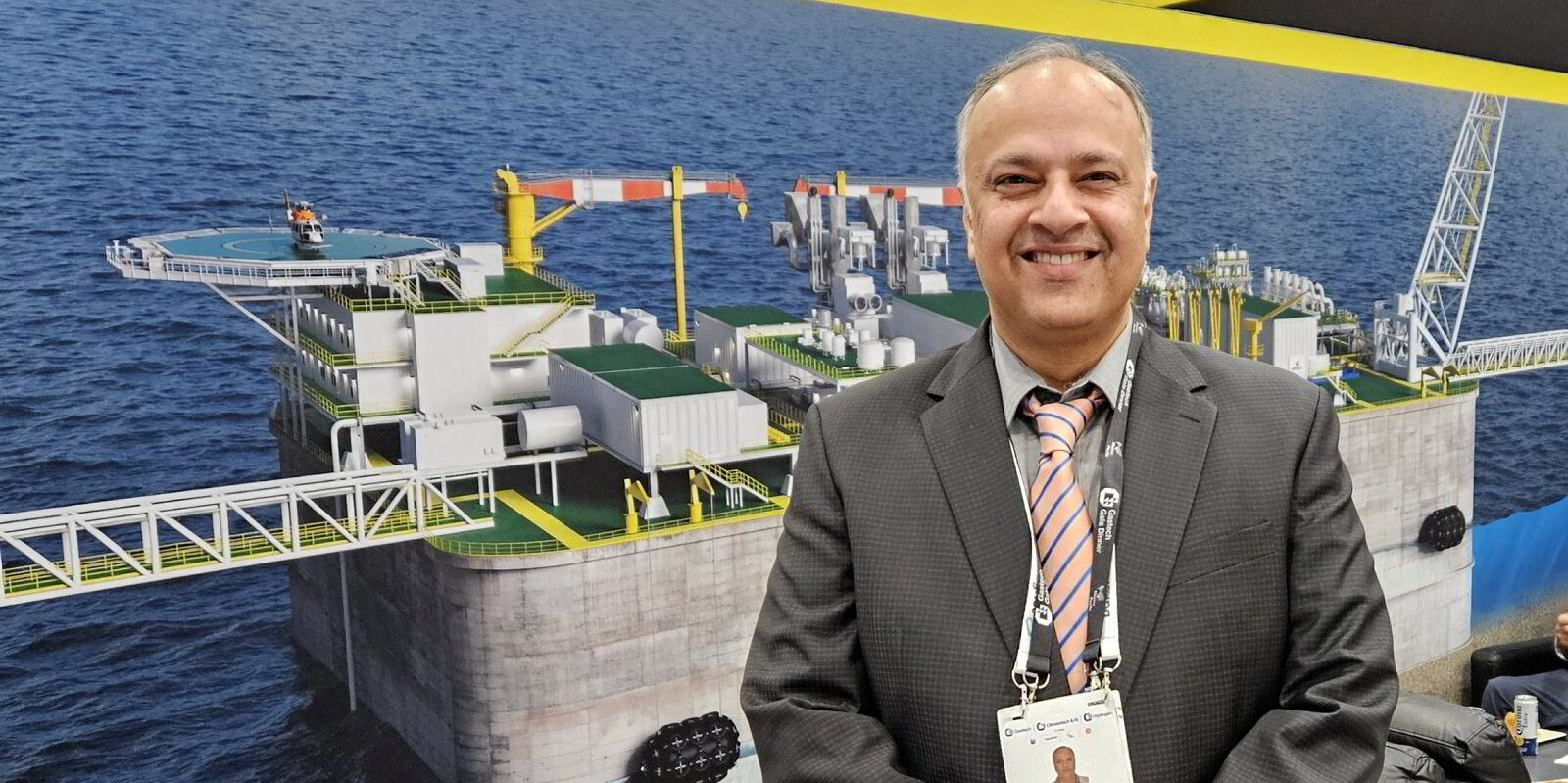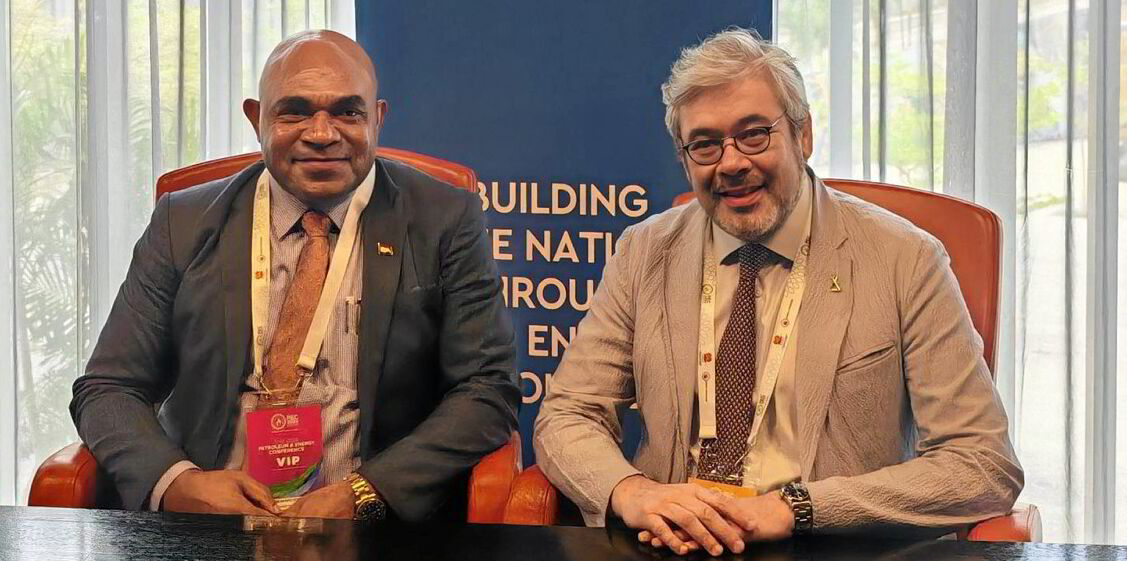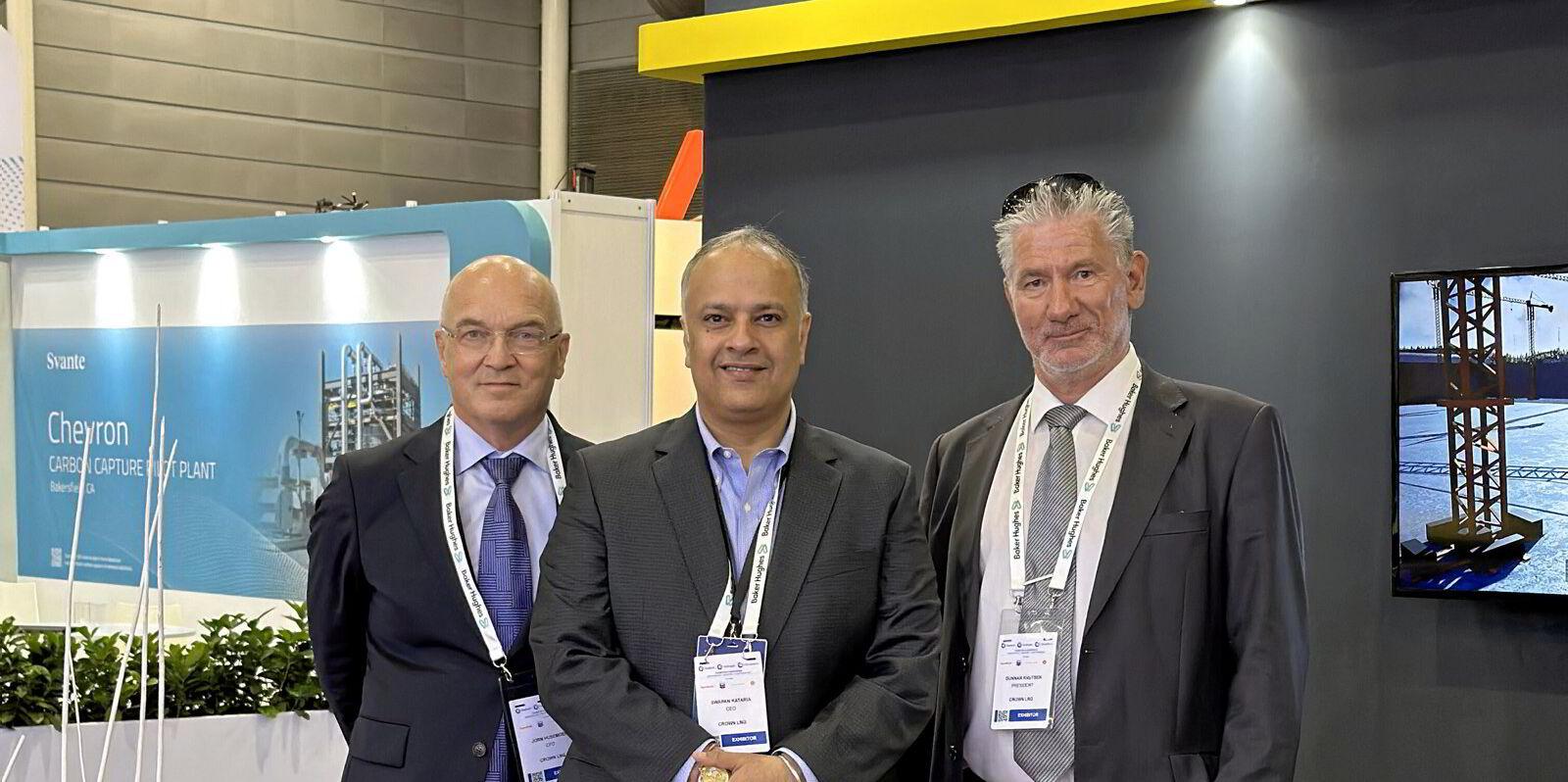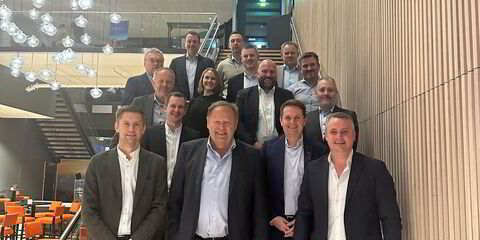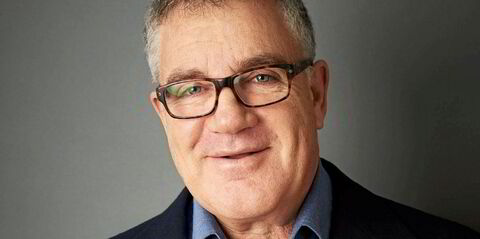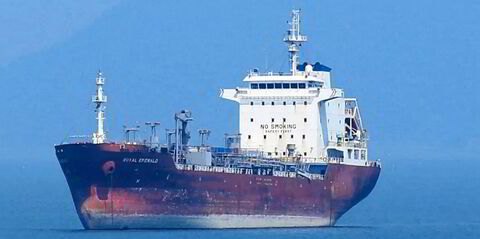Newly US-listed liquefaction and receiving terminal developer Crown LNG is close to naming the site of its planned offshore LNG production project in the US.
Speaking to TradeWinds at Gastech in Houston last month, Crown chief executive Swapan Kataria said the company plans to build two gravity-based structures (GBS) of 4.5m to 5m tonnes per annum each in the US.
These will be located off Louisiana, outside US waters to give a 10-mtpa project.
Kataria said the company had looked at 40 different sites outside US waters and had narrowed these down to three.
He said Crown is homing in on its preferred location and checking the integrity of the pipelines that serve it before making an announcement and had already decided on the name of the project.
Kataria explained that the company was approaching its US project from a different direction to those who build out US liquefaction and then seek LNG buyers.
Instead, he highlighted that Crown is building its planned and permitted 7.2-mtpa Kakinada Terminal Project in India, which will also be a GBS, so it already had market access for its LNG.
Kataria said Crown hopes to start the GBS construction next year for the India terminal — which could be open to use by other importers. He hopes it will be in operation by the end of 2028 or in 2029.
For the US liquefaction project, Crown is looking for a dock to build the GBS and working on securing a gas supply for the project.
Kataria said the company is talking to gas suppliers on a take-or-pay basis on a flat price as it plans to sell its LNG on long-term contracts to price-sensitive Asian buyers in countries such as India and Vietnam.
He said while the gas producers are open to this, traders are not as this is where they make their margins.
“It’s never been done before,” he said. But it needs to be done because there’s a lot of gas and it is not finding a home on fluctuating and volatile prices.”
Kataria is clear that Crown will not do its own shipping but will find a partner for this aspect of its business. He revealed that several have been shortlisted.
Power plan
“Shipping is not something that we will do, but we will be responsible for it because we will be taking the product into the pipeline network of the other country,” he said.
He revealed that the company is also looking at adding integrated power plants to its offshore regasification GBS design with a subsea cable to provide power onshore. It has employed Bruno Larsen as its head of floaters and power plants.
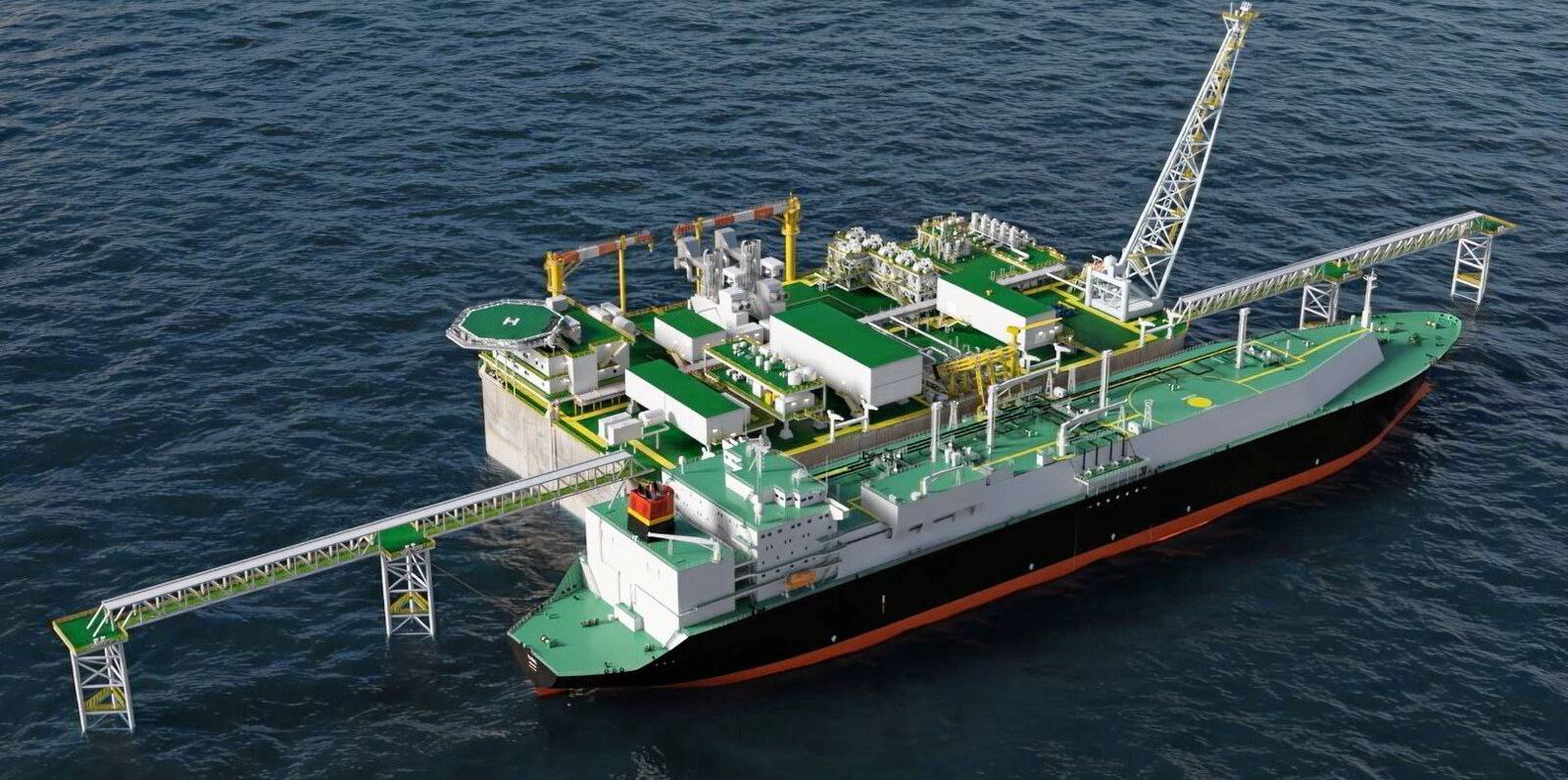
Kataria said Crown is currently looking at projects in Togo, West Africa, and the Dominican Republic — both of which are looking for power supply — for its terminal design.
“I see a huge growth in that sector,” he said.
On top of this, the CEO said Crown has applied for permits to site a second GBS-based LNG terminal in Vung Tau, Vietnam.
Long life
Kataria said the unique selling point of the GBS structures is that they can operate 365 days a year whatever the weather conditions. But he admitted that the upfront cost to develop these — four to five times that of a ship-based floating storage and regasification unit — is the biggest challenge.
He said on an mtpa capacity basis the GBS comes in at 15% to 20% more expensive than an FSRU but it has a long life expectancy of 40 to 50 years and much larger storage.
Crown is also looking to site a ship-based FSRU off Grangemouth in Scotland and intends to submit its planning application early in the first quarter of 2025. Company president Gunnar Knutsen said he has identified two companies that could provide LNG carriers for conversion to a regas unit.
Announcing its first interim results for the period to the end of June, Crown, which completed a reverse US listing in July, reported a total loss of $17m.
Crown stressed that it is still in the early stages and expects to continue to incur “significant expenses” as it expands its project pipeline and moves to bring these to market.
In a filing, it stated: “We anticipate our current projects to be operational at the earliest in 2027 for the Grangemouth Project and 2029 for the Kakinada Terminal Project. Once the projects are operational, we expect to begin generating revenues around that period.”
Kataria said being on the Nasdaq has given the company credibility and is now considering listing its Indian company Krishna Godavari LNG in India.
